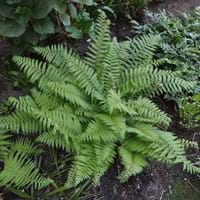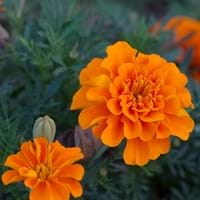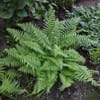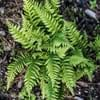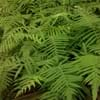Life Span
Perennial
Annual
Type
Fern
Flowering Plants, Shrubs
Origin
Europe, Eastern Europe, Southern Europe, Western Europe, Turkey
Hybrid origin
Types
Not Available
African or American Marigolds, French Marigolds, Mule Marigolds
Number of Varieties
Not Available
Habitat
Shady Edge, Woodland Garden Dappled Shade
Roadsides, wastelands
USDA Hardiness Zone
6-9
9-11
Sunset Zone
4, 5, 6, 7, 8, 9, 14, 15, 16, 17, 18, 19, 20, 21, 22, 23, 24
A1, A2, A3, H1, H2, 1a, 1b, 2a, 2b, 3a, 3b, 4, 5, 6, 7, 8, 9, 10, 11, 12, 13, 14, 15, 16, 17, 18, 19, 20, 21, 22, 23, 24
Habit
Clump-Forming
Upright/Erect
Flower Color
Not Available
Orange, Yellow
Flower Color Modifier
Bicolor
Bicolor
Fruit Color
Not Available
Not Available
Leaf Color in Spring
Green
Green
Leaf Color in Summer
Dark Green
Dark Green
Leaf Color in Fall
Dark Green
Dark Green
Leaf Color in Winter
Dark Green
Dark Green
Leaf Shape
Saw-tooth like
Toothed
Plant Season
Spring, Summer, Fall, Winter
Fall, Spring, Summer
Sunlight
Full Shade, Partial shade
Full Sun, Part sun
Growth Rate
Fast
Very Fast
Type of Soil
Clay, Loam
Loamy, Sandy, Well drained
The pH of Soil
Neutral, Alkaline
Neutral, Slightly Alkaline
Soil Drainage
Well drained
Well drained
Bloom Time
All year
Early Fall, Early Summer, Fall, Late Fall, Late Summer, Summer
Tolerances
Drought, Dry Conditions, Light Frost, Shade areas, Variety of soil types
Drought
Where to Plant?
Ground
Container, Ground, Pot
How to Plant?
Divison, From Rhizomes, Spores
Seedlings
Plant Maintenance
Medium
Medium
Watering Requirements
when new, water every week
Allow soil to be completely dry in between waterings, Form a Soil ring to water efficiently, Keep the ground moist but not water-logged, Water in morning to avoid prompting diseases, Water when soil is dry
In Summer
Lots of watering
Lots of watering
In Spring
Moderate
Moderate
In Winter
Average Water
Average Water
Soil pH
Neutral, Alkaline
Neutral, Slightly Alkaline
Soil Type
Clay, Loam
Well drained
Soil Drainage Capacity
Well drained
Well drained
Sun Exposure
Full Shade, Partial shade
Full Sun, Part sun
Pruning
Remove damaged leaves, Remove dead branches, Remove dead leaves
Prune ocassionally, Remove dead or diseased plant parts, Requires little pruning
Fertilizers
All-Purpose Liquid Fertilizer
All-Purpose Liquid Fertilizer
Pests and Diseases
Red blotch
Alternaria Leaf Spot, Bacterial leaf spot, Damping-off, Gray mold, Powdery mildew, Root rot
Plant Tolerance
Drought
Drought
Flower Petal Number
Single
Single
Fragrant Bark/Stem
No
Yes
Foliage Texture
Fine
Fine
Foliage Sheen
Glossy
Matte
Invasive
Not Available
No
Attracts
Birds, Butterflies, Hummingbirds
Butterflies
Allergy
Not Available
Asthma, Eye irritation, Red eyes, Runny nose, Throat itching, Watery eyes
Aesthetic Uses
Cottage Garden, Showy Purposes
Showy Purposes
Beauty Benefits
Good for skin
Not Available
Environmental Uses
Air purification
Air purification
Medicinal Uses
Poultice, Sore throat, Tonsillitis
Burns, constipation, Inflammation, Upset stomach, Wounds
Part of Plant Used
Leaves, Root, Stem
Flowers, Seeds
Other Uses
Used as Ornamental plant, Used for its medicinal properties
Can be made into a herbal tea, Decoration Purposes, Used As Food
Used As Indoor Plant
No
Yes
Used As Outdoor Plant
Yes
Yes
Garden Design
Bedding Plant, Container, Feature Plant, Houseplant, Tropical, Water Gardens
Bedding Plant, Edging, Foundation, Houseplant, Mixed Border
Botanical Name
POLYSTICHUM setiferum
TAGETES 'Cottage Red'
Common Name
Alaska fern
Marigold
In Hindi
Soft Shield Fern
गेंदा
In German
Grannen-Schildfarn
Ringelblume
In French
Soft Shield Fern
Souci
In Spanish
Soft Shield Fern
Caléndula
In Greek
Soft Shield Fern
κατιφές
In Portuguese
Soft Shield Fern
Malmequer
In Polish
Soft Shield Fern
Nogietek
In Latin
Soft Shield Fern
Caltha
Phylum
Pteridophyta
Tracheophyta
Class
Filicopsida
Magnoliopsida
Order
Polypodiales
Asterales
Family
Dryopteridaceae
Asteraceae
Genus
Polystichum
Tagetes
Clade
Not Available
Not Available
Tribe
Not Available
Not Available
Subfamily
Not Available
Not Available
Number of Species
Not Available
Importance of Soft Shield Fern and Marigold
Want to have the most appropriate plant for your garden? You might want to know the importance of Soft Shield Fern and Marigold. Basically, these two plants vary in many aspects. Compare Soft Shield Fern and Marigold as they differ in many characteristics such as their life, care, benefits, facts, etc. Every gardener must at least have the slightest clue about the plants he wants to plant in his garden. Compare their benefits, which differ in many ways like facts and uses. The medicinal use of Soft Shield Fern is Poultice, Sore throat and Tonsillitis whereas of Marigold is Burns, constipation, Inflammation, Upset stomach and Wounds. Soft Shield Fern has beauty benefits as follows: Good for skin while Marigold has beauty benefits as follows: Good for skin.
Compare Facts of Soft Shield Fern vs Marigold
How to choose the best garden plant for your garden depending upon its facts? Here garden plant comparison will help you to solve this query. Compare the facts of Soft Shield Fern vs Marigold and know which one to choose. As garden plants have benefits and other uses, allergy is also a major drawback of plants for some people. Allergic reactions of Soft Shield Fern are Not Available whereas of Marigold have Asthma, Eye irritation, Red eyes, Runny nose, Throat itching and Watery eyes respectively. Having a fruit bearing plant in your garden can be a plus point of your garden. Soft Shield Fern has no showy fruits and Marigold has no showy fruits. Also Soft Shield Fern is not flowering and Marigold is flowering. You can compare Soft Shield Fern and Marigold facts and facts of other plants too.
